As Geetanjali Krishna treks up to the Spartan temple of Triyuginarayan in Rudraprayag, she can't help but wonder about the excesses of Indian weddings.

The Great Indian Wedding Season is upon us, and often, after attending yet another excessive Indian wedding, I find myself remembering the time spent at the site of a mythical marriage that offered a sharp contrast.
They say that the temple of Triyuginarayan, high up in Uttarakhand's Rudraprayag district, is as Spartan today as it was when Shiva and Parvati were wed there. In myth, few were present when Shiva married his lovely princess -- and to date, this delightful little town attracts few pilgrims and fewer tourists.
It could be to do with the fact that is not easy getting there.
The roads, where they existed, are bumpy and there was a bit of an uphill climb to reach the village from the main road.
As we trudged up in the mid-afternoon sun, I wondered how times have changed from the simple wedding that Shiva-Parvati had, to the seven-day destination wedding extravaganzas of today. Yet, so many modern marriages are short-lived, while believers believe that the blaze of that mythological wedding fire still burns in Triyuginarayan, and will continue to do so till the end of time.
Through the trees, every now and again, the clouds parted to give tantalising glimpses of the Himalayas.
Apparently, Triyuginarayan almost directly faces Kedarnath -- the two temples are separated by a valley deep and wide enough to take Triyuginarayan off the regular pilgrim circuit.
Other than the temple, it was a typical mountain village, with a narrow, steep path and smoke from village hearths rising up from the chimneys. Fruit trees and crops filled the terraces around the temple, and other than the usual religious memorabilia being sold here, there were few signs of commercial activity.
To live here, I mused, and breathe clean mountain air every day, would be a dream come true.
I wanted to soak in the place from the vantage point of a teashop, but the tea-seller urged a visit to the temple first. "When a visitor first comes to Triyuginarayan, he must first bow his head to Vishnu, the lord of all yugas, epochs," he admonished.
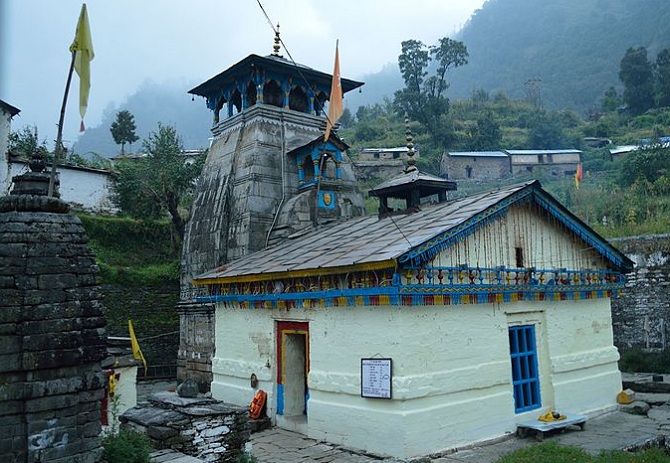
At first glance, the temple looked small and even unassuming. But as I circumambulated it, a sense of calm descended, and I found a sunny spot to contemplate myth and marriage.
A woman who had brought wood to feed the eternal fire sat down next to me.
What did she pray for here, I asked?
"I pray that I die before my husband," said she.
Her husband, I learnt, had no job and spent his days lounging in the sun, watching his potatoes grow.
He was, she said, a good man during the day; "at night, he drinks," she added. "But being married is a privilege, so I pray for his longevity."
Clearly, along with the sacrificial fire, many other ideas had withstood the tests of time and modernity here.
Biting back my questions, I asked her about the temple instead. Architecturally, she said proudly, it resembled the temple of Kedarnath.
"Triyuginarayan has always fulfilled the wishes of all his devotees," she said. "Maybe my prayers will make my husband give up drinking and find some work."
As the sun dipped behind a mountain top, that glass of steaming, sweet tea that I hoped the teashop had waiting for me, had begun to seem very inviting. So, I trudged up the steep lane to the shop that had a single bench placed outside.
Unsurprisingly, several local children were waiting for me there.
Have I been to Mumbai, they asked? Then, of course, they wanted to know if I'd met any famous actors there.
"Are you a doctor?" a stranger suddenly asked. I replied in the negative, asking if she needed one.
"My mother-in-law fell and hurt herself too badly to walk to the road to catch a bus to the nearest hospital," said she. "Life here is hard -- no medical facilities, no schools… I sometimes wish I too had migrated to the city with my husband!"
The young boys couldn't wait to leave their quaint mountain home either.
As I sipped tea, unwillingly planning an early morning departure to Delhi to attend a wedding, the multiple ironies weren't lost on me. Once again, the grass seemed greener -- not only across sides, but across epochs as well.



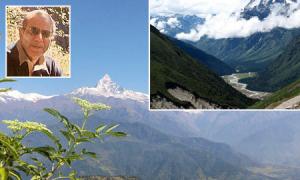

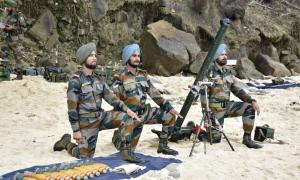
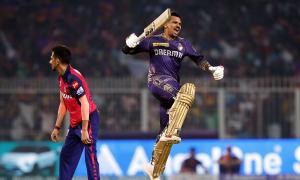
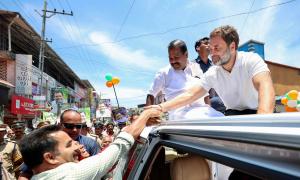


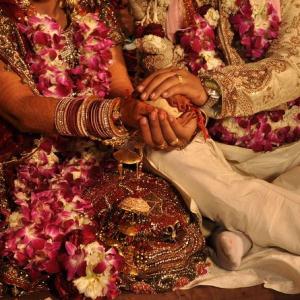
More from rediff